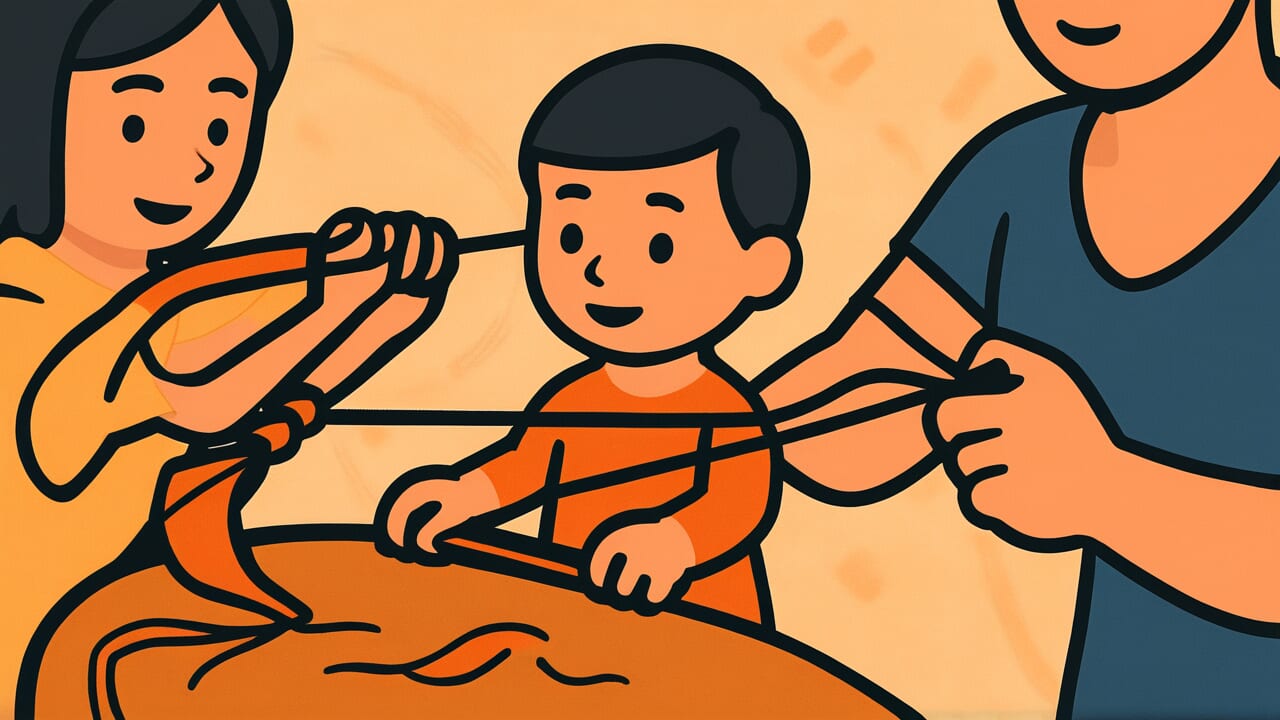How to Read “A severed bond is reconnected through a child”
En no kireme wa ko de tsunagu
Meaning of “A severed bond is reconnected through a child”
This proverb means that even when a married couple divorces and their relationship ends, if they have a child together, their connection cannot be completely severed.
The child keeps them linked. It speaks to the depth of blood ties and the lasting relationships they create.
People use this saying when talking about couples considering divorce or those who have already separated.
While the social relationship of marriage can be dissolved, the biological relationship of parent and child cannot be erased.
Through raising and caring for their child, former spouses must continue to interact in some way. This is simply the reality.
Today, systems like joint custody and visitation rights allow both parents to stay involved after divorce.
This proverb captures the special nature of blood relationships, which remains relevant to these modern issues.
Origin and Etymology
The exact first appearance of this proverb in literature is unclear. However, it likely emerged as an expression reflecting Japanese views on family and blood ties.
The word “en” (bond) comes from Buddhist terminology. It refers to the mysterious force that connects people.
The marital bond especially had a social contract aspect, as shown in the term “en-gumi” (marriage arrangement).
During the Edo period, divorce was not uncommon. The system of “mikudarihan” (three-and-a-half-line divorce letters) was well established.
Yet no matter how badly a marriage failed, the reality remained that children continued to bind both parties together.
The choice of the verb “tsunagu” (reconnect) is interesting. Rather than “musubu” (tie), “tsunagu” suggests barely holding together something that has nearly broken.
This carries a somewhat passive yet certain sense of connection. It expresses a different kind of bond from the emotional tie of marital love.
It represents the physical, unbreakable relationship created by blood connection through a child.
This proverb likely emerged during an era when the family system was highly valued. It succinctly expresses the powerful force of blood ties.
Usage Examples
- We’re divorced, but we still see each other at our kid’s sports day. “A severed bond is reconnected through a child” really says it well.
- Those two supposedly broke up, but they’re still in contact. Well, “A severed bond is reconnected through a child,” as they say.
Universal Wisdom
The truth this proverb speaks to lies in the difference between “bonds we can choose” and “bonds we cannot choose” in human relationships.
Marriage, no matter how deep the love, ultimately has a contractual aspect that can be dissolved.
But the blood tie between parent and child is an absolute relationship that cannot be erased, regardless of circumstances.
Throughout history, humans have deeply understood the nature of these two different types of bonds.
Love changes and feelings can cool. However, a child, as a biological fact, forever connects two people.
This can be a joy, and sometimes a burden.
This proverb continues to be passed down because it perfectly captures the complexity of human relationships and the special power of blood ties.
We can choose many things through our own will. But the fact that we are the parent of a child we brought into the world cannot be changed by any choice.
Our ancestors expressed this immovable truth in simple words. It represents a universal insight into the foundation of human society.
When AI Hears This
When a married couple is directly connected, network theory calls this a “strong tie.”
Strong ties allow efficient flow of information and resources, but they also have vulnerability. When a direct connection between two points breaks, the entire network becomes fragmented.
However, when a child exists as a third node, the situation changes completely.
Sociologist Granovetter discovered a principle called “the strength of weak ties.”
This paradox shows that indirect weak connections contribute more to overall network information flow and stability than direct strong relationships.
Even if the marital relationship weakens, two pathways remain: father-child and mother-child. This creates an indirect two-step path between the former spouses.
In this structure, the child functions as a “broker filling structural holes,” mediating information, emotions, and even new resources like grandchildren between the parents.
What’s interesting is that redundancy actually increases compared to direct connection.
For example, if you can’t reach the father, you can get information through the mother. This detour makes the post-divorce family network surprisingly resilient.
By having a child as a relay point, the relationship may break but the information network remains. This follows the same principle as redundant design in communication networks.
Lessons for Today
What this proverb teaches us today is the weight of responsibility in life and the importance of being prepared to accept it.
Having a child means creating a lasting relationship that cannot be dissolved by temporary emotions or changing circumstances.
In modern society, divorce has become common and family forms have diversified.
But regardless of the form, both parents remain irreplaceable to their child. This proverb reminds us of a simple but important truth.
Even when a marriage ends, parental responsibility continues.
At the same time, this proverb carries a message of hope.
Even if a couple separates, they can build a new form of relationship through the treasure that is their child.
This may be a mature cooperative relationship as parents, different from a marriage based on romantic love.
Life choices always come with responsibility. Taking that responsibility seriously is what it means to grow as an adult.
This is what the proverb quietly tells us.



Comments